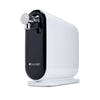
Home Well Maintenance
How we source water for home use is an integral part of a sustainable house, though often overlooked. Homeowners living outside of urban areas rely on well-water instead of the municipal water sources that city dwellers are accustomed to. In these cases, the water they use for cooking, cleaning, bathing, and drinking is right underneath their feet. Caring for and adequately maintaining a well will ensure a lifetime of cheap and abundant water for your family. However, neglecting to care for this critical water source will often shorten the lifespan of a well or result in potentially unsafe water for household use. Below, Rise offers a complete guide on well maintenance.
Table of Contents
- Where Do We Get Our Fresh Water From?
- How Much Water Do We Use Daily?
- What Sustainable Impacts Does Our Water Source Bring?
- Is a Water Well a Good Investment?
- Is Well Water Easy to Maintain?
- How Often Should a Well Be Cleaned?
- How Often Should a Well Be Checked?
- Do Wells Need to Be Flushed?
- How Do You Landscape Around a Well?
- Do Pesticides Get Into Well Water?

Where Do We Get Our Fresh Water From?
8 percent of single-family households use private wells. The vast majority of homes in North America receive water from municipal water systems. These systems often require enormous energy to source, pump, and distribute long distances to individual households. A recent study published in Nature Communications finds that since the beginning of industrialization around 1870, human populations in the US have moved away from rivers and lakes and primarily towards areas overlying significant aquifers. Pumping technology allowed increased groundwater accessibility in the 20th century, allowing large cities to spring up in areas where water is scarce.
Related Products
Shop Related Products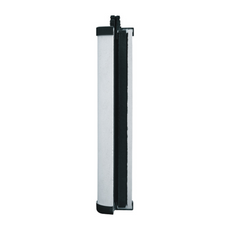
Franke Filter Cartridge Chlorine Triflo FRX02
$61.75
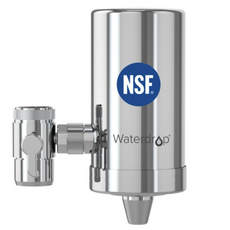
Waterdrop WD-FC-06 Faucet Water Filter
$47.99
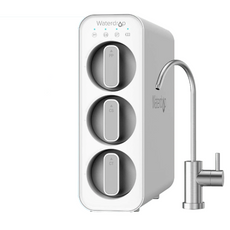
Waterdrop WD-TSC-W Under Sink Filtration System Integrated Dual Carbon
$134.99
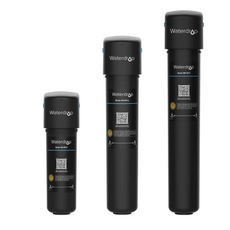
Waterdrop WD-10UB/15/17 Under Sink Water Filter with Faucet
$62.99 - $94.99
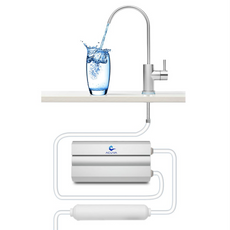
Acuva Arrow 5 UV Water Purifier with Smart Faucet
$1,099.99
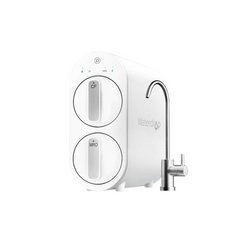
Waterdrop G2P600 Reverse Osmosis Water Filtration System
$359.00
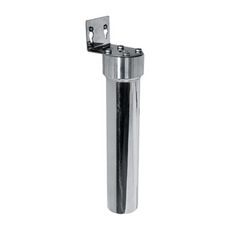
Franke FRCNSTR Stainless Steel Filtration Canister
$260.00
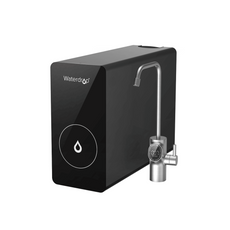
Waterdrop WD-D6-B Reverse Osmosis Water Filter System
$399.00
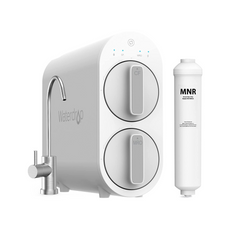
Waterdrop WD-G2MNR-W Remineralize Reverse Osmosis Water Filter
$309.99
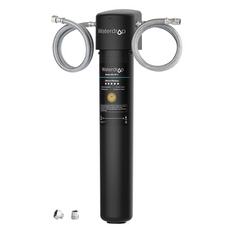
Waterdrop 17UA Under Sink Water Filter System
$84.99
How Much Water Do We Use Daily?
The average American uses 88 gallons of water each day. A four-person household, then, would require over 128 thousand gallons of water each year. Each gallon of water weighs 8.34 pounds, meaning that the average American family uses well over one million pounds of water (in weight). Moving that water long distances certainly comes with a considerable energy footprint. This energetic impact is rarely factored into individuals' or a household's carbon footprint.
What Sustainable Impacts Does Our Water Source Bring?
The problem with this demographic trend is that an enormous amount of energy is required to pump and distribute that water. For example, the Southern Nevada Water Authority reports that southern Nevada's dry, desert-like climate required the region to use over 850 million kilowatt-hours of electricity in 2008 to move 439,187 acre-feet of water into valley homes and businesses. This amount of energy dwarfed every other type of local electricity and energy consumption.

Is a Water Well a Good Investment?
Depending on where you live, your household water consumption may be one of your primary energy expenditures. Investing in a well can help to reduce your home's energy use drastically. One expert in the industry estimates that a ½ HP well pump would use around 240 kWh of electricity each year. Just one solar 250-watt solar panel would most likely provide more than enough clean and renewable electricity to power that pumps throughout the year.
With water scarcity becoming more frequent, home wells are becoming an increasingly important aspect of the resilient home. Water outages and the contamination of municipal water systems (think Flint, Michigan) might be sufficient motivation for homeowners to install their autonomous water supply. When connected to a cistern and rainwater harvesting system, a well should be able to promise homeowners a steady and secure source of water for a lifetime.

Is Well Water Easy to Maintain?
Once a well is installed, maintenance is usually relatively easy and not time-consuming. However, you cannot entirely abandon a well and expect clean, potable water to be delivered into your home at all times. In many ways, owning and managing a home well is similar to having an off-grid solar array installed on your roof. Though maintenance is limited, the restraints that come with owning a well or solar panels allow you to be more aware of how the water or energy you use is delivered to your home.
One of the essential elements of owning a well is proper cleaning. Groundwater is generally considered clean and safe for human consumption. However, most drilling companies will provide initial water tests to ensure that your well water does not contain heavy metals or other potentially dangerous pathogens. It is essential to regularly check for E.coli and total coliform bacteria in urban or suburban areas - at least once a year. These pathogens thrive in unclean water and might contaminate your well water if located too close to septic tanks or other potential sources of contamination.
The Penn State Extension Service recommends that homeowners with wells test annually for total coliform bacteria and E. coli bacteria. In addition, every three years, testing should be carried out for pH and total dissolved solids.
Besides periodic testing of your water quality, homeowners would do well to use a simple home water filter. Check out this Rise article to learn about the best home water filtration devices on the market today.
How Often Should a Well Be Cleaned?
Wells should be professionally cleaned at least every ten years. To ensure that you're well is appropriately cleaned and providing safe drinking water, it is best not to service your well yourself. Professional water well system contractors have particular materials and techniques to ensure your system is safe and operational. In addition, every time a well cap is removed, there is the potential for bacteria or other types of pathogens to contaminate your water supply.
Homeowners are recommended to perform additional testing and cleaning any time there is a change in land use around the well. For example, if a neighbor installs a new septic system or if you decide to install an in-ground pool near your well, the changes in land use could affect your well. Of course, any noticeable change in color, taste, or odor of the water from your well should lead to immediate testing.
How Often Should a Well Be Checked?
Home wells will continue to function safely and generally without outside input. However, regular testing and checks by qualified professionals will extend the lifespan of your well.
The National Ground Water Association recommends annual checks for "mechanical problems, cleanliness, and the presence of certain contaminants, such as coliform bacteria, nitrates/nitrites, and any other contaminants of local concern, (for example, arsenic and radon)."
Regular check and maintenance on your well and pump can maintain its "yield," which is the rate at which water can be pumped into your home. Though most wells will see their yield rate decrease over time, this can be avoided by choosing qualified professionals when initially drilling and regular maintenance.
Check-ups by water well professionals can help to reduce or eliminate incrustation that occurs due to mineral deposits along with the physical "plugging" of your well through the buildup of sand, gravel, or other sediments. Having your well checked annually can help to limit the growth of harmful microorganisms. This can even extend the lifespan of your pump by identifying potential problems before they occur.
Do Wells Need to Be Flushed?
With severe weather events becoming more common, preparing your home for floods should be a high priority for every homeowner. Unfortunately, extreme flooding events can damage your well in several ways. When a flood either partially or fully submerges your well, its water quality might be compromised by sewage, petroleum products, sediment, bacteria, viruses, and other floating debris.
If this occurs, homeowners will need to hire a professional to flush their well. Generally, this process requires disinfecting the well with chemicals like chlorine and flushing the entire system. If you cannot find a certified technician to flush your well and your household is left without a safe water source, you can follow these instructions to do it yourself:
- Remove any visible sources of debris that you see contaminating your well.
- Contact your local extension service to determine the correct amount of chlorine bleach to use according to the size of your well. For example, an 8-inch-diameter well casing that is 100 feet deep requires about one gallon of bleach.
- Pour the bleach into your well and use a water hose to make sure it is washed to the bottom.
- Let the bleach sit for a minimum of 24 hours. During this time, do not use the water outlets in your home.
- After 24 hours, open all the water taps in your home and run until the strong chlorine smell is no longer noticeable.
- After one week, test your water to make sure that the contaminants have been removed. If bacteria is still present, you may need to re-flush your well or have it done professionally.

How Do You Landscape Around a Well?
Homeowners with wells on their property need to take some precautions regarding the landscaping around their well. Firstly, you need to make sure that your well casing is at least 12 inches above the ground. Secondly, the soil around your well casing should be sloped downward away from the well to discourage water and debris from building up around it. Ensure not to plant any plants or trees within four feet of your well, as the roots can damage the casing.

Do Pesticides Get Into Well Water?
One of the most dangerous potential sources of contamination for home wells comes from pesticides used on lawns and gardens. Never store pesticides anywhere near your well casing. If you mix pesticides with a garden hose, never put the hose inside the tank or container containing the pesticides. This practice could lead to a back-siphonage that contaminates your well.
Of course, using large amounts of pesticides on your lawn can contaminate your well by leaching contaminants. An improper well casing can allow both contaminated surface water and groundwater to enter your water supply.
Instead of using pesticides or other lawn chemicals, consider xeriscaping with native plants or developing a permaculture design for the land around your home.

Maintaining a well does not require a large amount of time or effort by homeowners. However, annual check-ups and testing by certified technicians are essential to ensure a steady supply of safe, potable water for your family.
Disclaimer: This article does not constitute a product endorsement however Rise does reserve the right to recommend relevant products based on the articles content to provide a more comprehensive experience for the reader.Last Modified: 2021-10-28T00:49:55+0000Article by:
Tobias Roberts
Tobias runs an agroecology farm and a natural building collective in the mountains of El Salvador. He specializes in earthen construction methods and uses permaculture design methods to integrate structures into the sustainability of the landscape.
